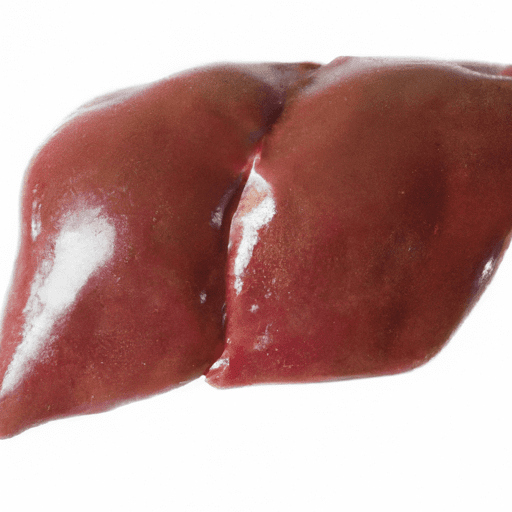The Versatile Delicacy: Exploring the World of Liver
Liver, often overlooked or perceived as an acquired taste, is a culinary gem that has stood the test of time. This often-neglected organ meat has a rich history and a unique place in the world of cooking. From its diverse tastes to its astounding nutritional value, liver deserves a spotlight in our kitchens. Join us as we journey into the fascinating realm of liver!
A Taste Adventure
Liver possesses a distinctive flavor profile that varies depending on the animal it comes from. Beef liver boasts a robust, earthy taste, while pork liver leans more towards a milder and sweeter essence. Chicken liver, on the other hand, delights with its delicate and slightly gamey flavor. No matter the type, cooking liver properly is essential to unlock its full potential.
Culinary Applications
Liver is a versatile ingredient that can be prepared in numerous ways, adding depth and richness to various recipes. Here are a few common uses:
1. Pâté
Liver pâté is a classic and elegant spread. When transformed into a smooth, creamy texture, liver develops a refined flavor that pairs wonderfully with crusty bread, pickles, and even fruit preserves. The possibilities for experimentation with herbs, spices, and liquors are endless when creating personalized pâté recipes.
2. Liver and Onions
A traditional dish in many cultures, liver and onions is a hearty comfort food. The rich, caramelized onions complement the tender, pan-seared liver perfectly. This comforting combination is often served alongside mashed potatoes or crusty bread.
3. Stir-fries and Curries
Liver adds a distinct richness to stir-fries and curries, bringing depth and complexity to these dishes. The inherent flavor of liver can stand up to bold spices and sauces, creating a harmonious blend of tastes that tantalize the taste buds.
Nutritional Powerhouse
Liver is an exceptional source of essential vitamins and minerals. Packed with iron, zinc, folate, and vitamins A and B12, incorporating liver into your diet can boost your overall nutritional intake. These vital nutrients support healthy blood circulation, assist in energy production, and aid in maintaining optimal brain function.
However, as liver is high in cholesterol, it is advisable to consume it in moderation and consult a healthcare professional to ensure it aligns with your dietary needs.
Fascinating Facts and History
Liver has been enjoyed across various cultures for centuries. In ancient times, it was revered for its perceived ability to rejuvenate and provide strength. Even today, liver remains a delicacy in many cuisines around the world.
In many traditional recipes, liver is a key ingredient during festive occasions or celebrations. For example, in Italy, liver can be found in the iconic dish “fegato alla Veneziana” during the Carnival season. Similarly, the French take pride in their exquisite dish “foie gras,” which is made from the fattened liver of ducks or geese.
Final Thoughts
Liver, often underappreciated and misunderstood, is a true culinary powerhouse. Its ability to transform dishes with its unique taste and nutritional benefits is unlike any other ingredient. Whether you’re indulging in a velvety pâté or savoring the comforting combination of liver and onions, this versatile delicacy has something to offer for everyone.
So, next time you come across a recipe involving liver, give it a chance! Embrace the mystery, relish the history, and embark on a taste adventure like no other.
Origin
Liver is a highly nutritious organ meat that comes from various animals, including cows, pigs, lambs, and chickens. It has been consumed by humans for thousands of years and is considered a delicacy in many cultures.
Common Uses
Liver is the primary ingredient in several popular dishes around the world. It is commonly used in pâtés, terrines, and sausages, providing a rich and distinct flavor. In many cuisines, liver is also used in traditional recipes such as liver and onions, liver pâté, foie gras, and liverwurst.
Nutritional Benefits
Liver is a nutrient-dense food that offers various health benefits. It is an excellent source of high-quality protein, essential amino acids, vitamins, and minerals. Some of the key nutrients found in liver include vitamin A, vitamin B12, iron, copper, zinc, and folate. However, it is important to consume liver in moderation due to its relatively high levels of cholesterol.
Unique Properties and Historical Significance
Liver has historically held significance in many cultures and has been used for medicinal purposes as well. It is known for containing a high concentration of vitamin A, which was historically used to treat night blindness. In some traditional Chinese medicine beliefs, liver is considered a valuable source of energy and is believed to nourish and tonify the liver organ in the body.
Moreover, liver has been a traditional food for women during pregnancy, as it is rich in nutrients that support fetal development. It has also been used in ancient times to feed individuals with malnutrition or those recovering from illness due to its high nutritional value.
In summary, liver is a versatile ingredient used in various cuisines. It is highly prized for its nutritional benefits, including its composition of vitamins, minerals, and protein. Its historical significance and unique properties have made it an integral part of many traditional recipes and culinary practices across different cultures.




Use the share button below if you liked it.
It makes me smile, when I see it.